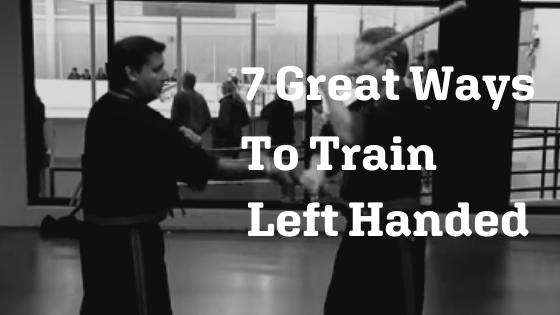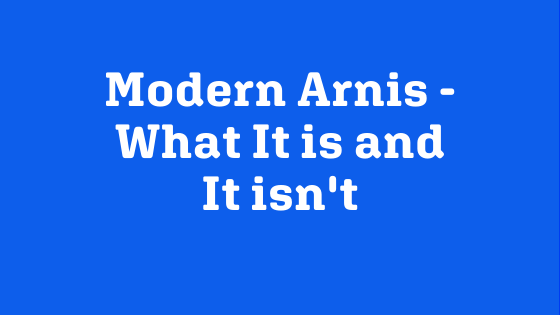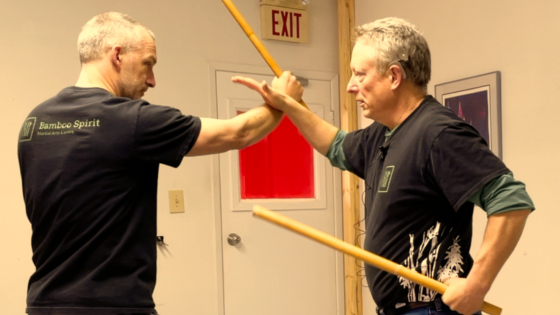7 Great Ways to Train Left Handed
The late Professor Remy A. Presas was left-hand dominant yet was just as proficient with his right. He felt strongly enough about ambidexterity that he insisted that we learn to train both right and left-handed.
Sometimes, he had right-hand dominant students train with their left hand first. One Master of Tapi Tapi told me it felt weird to switch to his dominant right hand after training left-handed for a while. He said that Professor told him, “You can have your right hand back!”
If you are not able to view this video, click here.
This is a small peek into his left-hand tapi tapi material.
Many right-handed players struggle to train left-handed for one simple reason:
It’s quite awkward for many.
They feel uncoordinated, awkward, and foolish. “I’m so uncoordinated that I look stupid!”
Banish that thought.
I felt the same way when I started training in Modern Arnis back in the 1990s. It takes time, patience, and perseverance to establish some level of comfort with the stick in the left hand.
While there is a progression to how the left hand is taught in Modern Arnis, it simply comes down to a willingness to practice it as much as possible.
While you have the stick in your left hand, you’re practicing your right check hand as well.
With this in mind, here are seven great ways to train with the left:
(1) Angles of Attack: This is a good place to start. A word to the wise: don’t do this only once and be done with it. Perform multiple repetitions, taking your time, and paying attention to form. Please don’t rush through it or go through the motions.
(2) Cane Anyos: put the stick in your left hand and practice the anyos (forms) left-handed. All you have to do is perform the mirror image of your right-hand anyos. That’s it. Easier said than done, I know. It takes time. But with some persistence, you can become proficient with the left-hand version of the cane anyos.
(3) Solo traditionals: Practice techniques such as banda y banda, rompida, figure 8, reverse figure 8, double zero, and the different variations of abanico. This is good solo practice. Pick up a light stick and focus on good form. Put your body behind it. Consistency is key. One does not benefit if you do 50 repetitions of each of the above moves and then don’t do it for 6 months.
For partner practice, focusing on good solid basics is key. Functionality rather than the fancy-schmancy stuff is what you’re aiming for.
(4) Sinawali practice is a good way to practice both hands. However, be aware that many students have a “strong side” component to their sinawali practice. I have often felt a student’s sinawali stronger on the right side than on the left side. It’s as if their mind switches off on the left side. Focus is imperative here in making sure that your sinawali is just as strong on the left as it is on the right.
(5) Block, check, counter: this can be quite awkward for many. Partners pair up with sticks in their left hand. One feeds the left hand 12 angles of attack. The other defends with the left-hand version of the block, check, counter drill. “Slow is the mother of skill!” should be remembered by both partners. Form and good footwork are important. Speed can be introduced as the partners become more comfortable.
(6) Slap off/Pull Off: this is awkward as well. This is practiced in a fashion similar to (5). One common mistake is not aiming the punyo correctly at your opponent. This takes time. As with the other drills, focus on repetition and form.
(7) Disarms: this is fun! Both partners have sticks in their left hands. One feeds. The other practices basic disarms. All you have to do is apply the standard disarms, except this time you are holding the stick in the left hand. With time, this will become second nature.
Over to you, do you have any suggestions to add to the above list? Let’s hear them!
Share this post:
- Click to share on Twitter (Opens in new window)
- Click to share on Facebook (Opens in new window)
- Click to share on LinkedIn (Opens in new window)
- Click to share on WhatsApp (Opens in new window)
- Click to share on Nextdoor (Opens in new window)
- Click to share on Pinterest (Opens in new window)
- Click to email a link to a friend (Opens in new window)
Brian Johns
Related Posts
4 Comments
Leave a Reply Cancel reply
Categories
- Arnis/Kali/Eskrima (113)
- Book Review (8)
- DVD Reviews (3)
- Guest Post (4)
- Inspiration (24)
- Martial Arts (99)
- My story (92)
- Safety (14)
- Tips & tricks (6)
- Uncategorized (3)
- YouTube Videos (8)






[…] with both the right and left hand. While I am right-hand dominant, I have fun playing with my left hand. I believe that it is vital for overall martial development to practice both sides. However, there […]
[…] you notice how Master Chuck executes techniques with both hands? Further, one hand seems to be independent of the other as well. That’s the beauty of espada […]
[…] 7 Great Ways to Train Left Handed […]
[…] 7 Great Ways to Train Left Handed […]